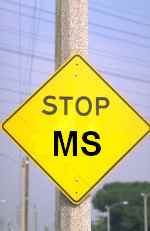Holmes’ Sign in Multiple Sclerosis

More accurately known as Stewart-Holmes’ sign after the two neurologists from whom it takes it’s name. Thomas Grainger Stewart (1877-1957) an English neurologist and Gordon Morgan Holmes (1876-1965) an Irish neurologist.
Also known as the rebound phenomenon, this is a sign where an individual is unable to check a movement when passive resistance is suddenly released.
The patient is asked to push against the examiner’s hand, with their own hand or foot. When the examiner removes his hand the patient is unable to react quickly enough to the removal of the resistance and the limb kicks out.
A positive result may indicate damage to the cerebellum region of the brain and could be indicative of such conditions as hypotonia or cerebellar ataxia.
Holmes’ Sign First Hand
I experience this phenomenon on a regular basis, as I have done for many years. The kettle in our kitchen, not the one shown above, is a modern electric kettle that sits on a plastic base unit from which it derives the mains power. The kettle sits on a kitchen work-top located below one of the kitchen wall cupboards. When I go to make a cup of tea or a mug of coffee, as I lift the kettle there is a slight resistance as the kettle disconnects from the power socket on the base unit. When this resistance releases, despite knowing it is pending, I slam the kettle into the wall unit above. It is most infuriating and, because of this Holmes’ Sign phenomenon, I am almost powerless to prevent it.
References:
Multiple Sclerosis Encyclopaedia
Free Medical Dictionary